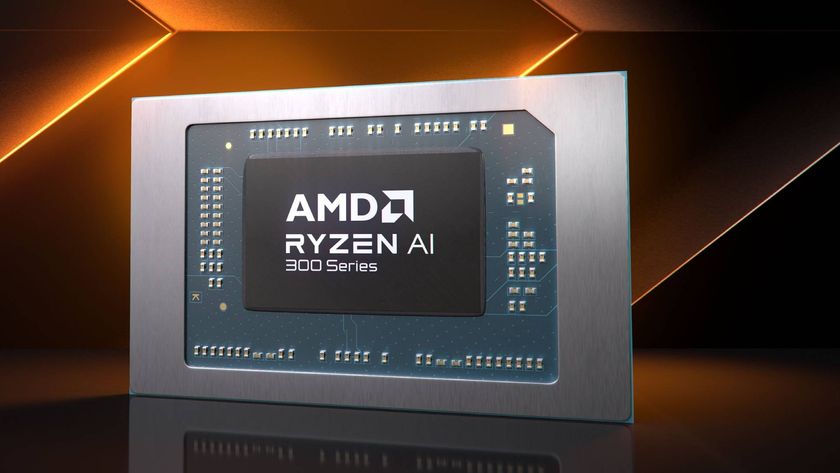Regardless of whether the plan works out in the end, it also means we’re seeing some excellent graphics technology being shoehorned into the chipset; the integrated 1270 inside the Turion machine should see AMD sailing through against Intel’s bog standard X3100 chipset. And it does! But not by much.
Cinebench (yes it’s synthetic, but we like it) rated the AMD’s OpenGL performance at 711 points, which Intel missed by a small margin. Visibly, though, the AMD results were much better; viewing the test with two identical screens shows that there’s a clear amount of extra processing power going on inside that ATI chipset.
Winner: Turion
Test 4: Gaming
With all the extra graphical goodness on AMD’s plate well and truly established, it was time to move back to the real world.
Or the bullet-filled world of paranormal shenanigans that is 2005’s FEAR, to be more precise; not the freshest of gaming morsels, but anyone expecting us to attempt a Crysis benchmark on these sub-£500 laptops has another think coming.
At the lower ends of the game’s performance settings, the ATI chipset retains its lead from the last round; all decadent and well-lit, with an average framerate in the 80s, it pummels Intel’s performance by a good 30fps.
Get daily insight, inspiration and deals in your inbox
Sign up for breaking news, reviews, opinion, top tech deals, and more.
Sadly, when pushing the graphics past the archaic 640 x 480 resolution, things start to go pear shaped for both machines; both manage scores around the 16fps mark when running in medium graphics mode and half that when running at high detail.
Despite the drop in framerate, though, the ATi card runs roughshod over this round. All this performance in the face of Intel’s undeniably hefty processor is a definite plus for AMD here.
Winner: Turion
Test 5: Price
Well, wouldn’t you know it? This heated contest has reached a final, deciding stage.
And it’s our unutterable pleasure to declare AMD the winner, since it undercuts Intel on price by nearly £50. But this is a slim victory; the Intel is the more responsive machine, the nicer machine to use day to day.
If you’re buying a lowcost laptop for work purposes, or just to browse the Internet, we’d recommend the slick mechanics of the Intel machine every time. But if you’re foolhardy enough to want to play three-year-old games on a bottom-of-the-barrel PC, you’re better off looking AMD’s way.
Problem is, you do have another option. Save up for just a little bit longer, put in an extra couple of hundred pounds, and grab a laptop with a better processor and meatier graphics on board, one which might even let you near some reasonably fresh games.
Neither of these machines is a gaming laptop; so the fact one of them does a reasonable job is neither here nor there.
Overall winner: Turion












